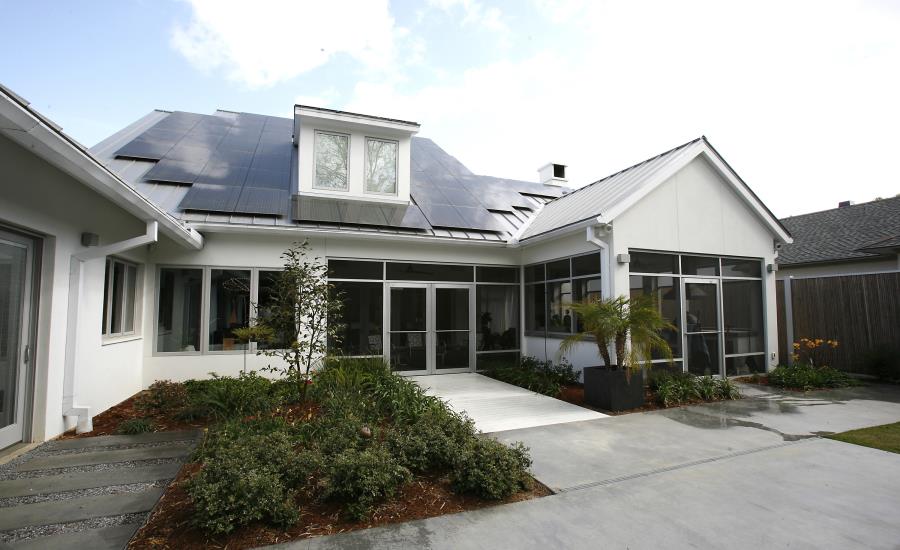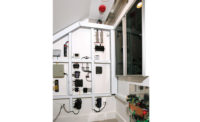For Thomas Marino, president of Advanced Technologies, Baton Rouge, La., “green” projects were nothing new. He had done projects that involved low-power, solar or other green elements. But when he ran into local attorney Joe Simmons at a trade show, the extremely environmentally conscious lawyer asked him to do the security and home automation for the custom home he was building. The home was new construction in a community of older homes and would feature as many green elements as possible, from the material in the countertops to the security and audio elements.
This family wanted an ecologically sustainable yet luxurious house, while lowering their carbon footprints. “The customer was very green-minded and was building a green home,” Marino says. “Most houses are built efficient today; this was purposed for green and Simmons did everything he could to make this house green.” Sustainability was of paramount importance to Simmons, as well as the convenience of being able to turn on and off lighting and audio/visual components at the touch of a button or on a schedule.
As a Leviton 5 Star dealer, Marino was very familiar with what that company’s security and home automation products could do for his client; but there was an added bonus as well. “One of the reasons we picked that manufacturer was part of the green initiative for this project was to pick locally sourced products whenever possible,” Marino says. “HAI, which was purchased by Leviton, is made in New Orleans.”
The resulting project features a Leviton security and automation system with a Control4 overlay. Automation of all sub systems in the house is designed to maximize the owners’ desires for ecological sustainability. To insure reliability, whole house surge suppression, and a conductive floor in the control room were installed. There are motion sensors in halls, flex sensors under steps, and a driveway sensor to safely illuminate the way when triggered. There is some scene lighting programmed for various rooms. Driveway and doorbell sensors alert the residents to visitors and the camera views automatically come up on the kitchen TV and all the Control4 touch screens.
“On this project no expense was spared to make this house green and highly reliable,” Marino says. “We did a lot of extra work to make this more reliable, including a grounding ring, elaborate surge protection and no redundant inter-connection points, which are points of failure. It saves both money and energy.”
Initially, whole house surge suppression was achieved with a grounding ring, and conductive flooring in the control room was installed. All cables were color-coded with matching heat shrink, Velcro strapping, cable labels, and cat-6 boots. Sensor wires were individually run to achieve individual names for doors, windows and all other sensor. Temperature of refrigerators, freezers, control room, and greenhouse is monitored. The pool system is integrated into Control4. And all the televisions use fiber optic HDMI cables connected to an HDMI matrix switch.
Each client has had their individual preferences and security addressed and accessed with programming of touch screens, iOS/android devices, and wand remotes. And as for the aesthetic quality of the system, the sensors and various detectors are either hidden in the home's framework, or if out in the open, painted to match the wall to which it is attached. Because of this detailed trim-out, automation equipment isn’t obvious to the casual visitor; this home appears as a well-appointed modern dwelling with all the creature comforts.
Marino is proud of the industrial methods used in this home to make it as high quality as possible. “Any times you can include elements like grounding rings, opto isolators for RS232 connections, etc., it adds a level of reliability. Most don’t put that in residential installations, but I do. I treat every job as if it is my own house.”
Marino also included slack in several places in the wiring to enable the homeowner to more easily change things out. “He still has the capability of repatching it any way he wants because I put slack in the walls. All the cables can be moved around and repurposed.”
Other elements of the house included solar energy panels, which Marino added battery backup to; a conductive flor he hand laid; a four-camera surveillance system is installed, with remote accessibility by iPhone, iPad, touch screens, and TV’s; and a sensor installed on the living room television when its position is out, to prevent fan blades from hitting the TV, including the announcement, “The fan has been overridden while the TV is pulled out.”
There are motion sensors in halls, flex sensors under steps, and a driveway sensor. Driveway and doorbell sensors alert the residents to visitors, while the camera views automatically come up on the kitchen TV and the Control4 touch screens. The security system, using an ASCO solenoid valve at the supply inlet to the house, shuts off the natural gas if gas or fire is detected and turns off the gas fireplace when the system is armed for “away.”
The client also wanted the ability to monitor the refrigerators and freezers for failure, control room temperature, greenhouse temperature, and outdoor temperature and humidity sensors display on the iPhone/iPad.
In addition to the security and home automation elements, Simmons also wanted an audio video system with A/V signals distributed anywhere on the premises. This was achieved with full matrix switching. To remain “green,” the power to all surround sound zones and unnecessary electronics disconnects when armed to away. A single button shuts down all electronics and lighting. The audio is also matrix-switched. The distributed audio/video system is controlled by Control 4 interfaces, personal mobile devices, and in-wall touch screens.
However, there was one element of the audio system that is not green, Marino acknowledges. “The amplifiers are liner so a little wasteful on energy, but they are only on when they need them. I chose those because I love the brand and the way it sounds. Sometimes performance is more important that ‘green.’”
Family safety, security, and comfort were all considered in programming the system. Specific temperatures, alerts, and announcements the clients wanted were added so their personal needs and wants could be anticipated. Marino worked closely with the clients, architect, and contractor in planning what was wanted and needed from the house and towards the end of the process the client and his family actually lived in the house for a few weeks to fine-tune the system.
“They wanted things like a little more time delay before the doors tell you they are open, which lights to have on, how long they stay on — typical living situations,” Marino says.
Overall the process went smoothly and the client was happy with the results. As for Marino, this was a project to remember. “It is what I do all the time, but it not usually so intensely ‘green.’ They are all efficient projects, but this was going at it like gangbusters.”




